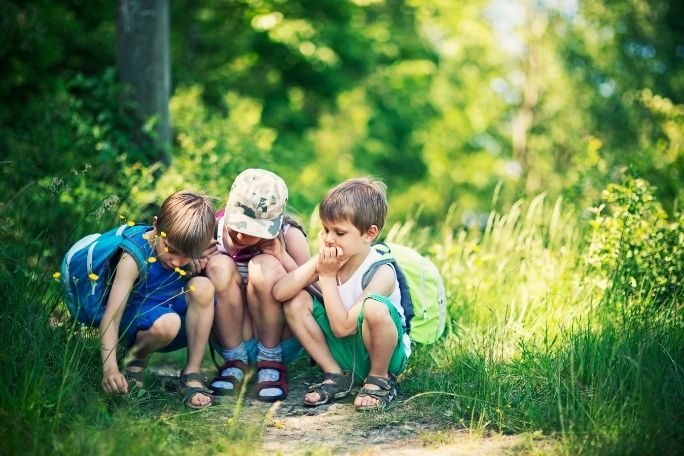Lesson summary
Students learn about mapping and the value of natural elements within their immediate environment. They work with a partner to create a map of the playground, which others use as a guide in order to find natural ‘treasures’ within the space.
Learning intentions:
Students will...
- create a map
- successfully follow directions.
Success criteria:
Students can...
- consider what is a natural treasure
- understand how to use a grid system for a map
- understand how to use a legend or key system for a map
- write clearly and concisely.
Lesson guides and printables
Curriculum links
Select your curriculum from the options below.
Lesson details
Curriculum mapping
Australian Curriculum (v9.0) content descriptions:
Mathematics:
Students learn to:
- construct a grid coordinate system that uses coordinates to locate positions within a space; use coordinates and directional language to describe position and movement (AC9M5SP02)
General capabilities: Critical and Creative Thinking,Personal and Social Capability.
Cross-curriculum priority: Sustainability
Relevant parts of Year 5 achievement standards:
By the end of Year 5, students use grid coordinates to locate and move positions.
Resources required
- Device capable of displaying a website.
- One copy of the Treasure Map Story (for teacher use).
- One copy of the Map Grid Template - Demonstration printed at A3 size (for teacher use).
- One copy of the Nature Treasures – Map Grid and Map Directions for each pair of students.
Skills
This lesson is designed to build students’ competencies in the following skills:
- communication
- critical thinking
Additional info
Level of teacher scaffolding: Medium - the teacher facilitates discussions, acts in character, demonstrates new concepts and assists students as necessary.
This lesson is designed to be taught outside. It contains all the tools required for students to reap the benefits of being outdoors while learning the outcomes of the Australian Curriculum. By spending time outdoors and connecting to nature, students are more likely to care for and conserve nature as adults.
This is an original Cool+ lesson.
Related professional learning
Introduction to Secondary STEM
Quick summary: This course will help you understand the essential foundations of STEM teaching and learning and provide opportunities to help build knowledge, skills and confidence to take on STEM in your classroom.


Welcome back!
Don't have an account yet?
Log in with:
Create your free Cool.org account.
Many of our resources are free, with an option to upgrade to Cool+ for premium content.
Already have an account?
Sign up with:
By signing up you accept Cool.org's Terms and Conditions(Opens in new tab) and Privacy Policy(Opens in new tab).